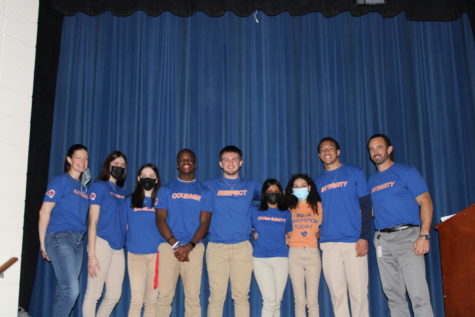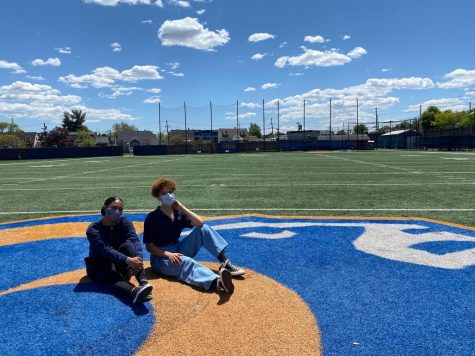Holiday Bird Count

Hello. Even though this post isn’t cooking related, I still thought that it would be a great idea. So every year, Audubon does this Christmas Bird Count where you look at different birds and tally up how many of those birds you’ve seen. Well, it can be cooking related depending on what bird, but that’s not the point. So I decided to try and get a head start, and, let me just tell you that I never knew how many pigeons there were until I did this bird count. Also, since I’m not much of a photographer, you’ll just have to deal with copy and paste images of these birds from Google.
Sparrows: 76 
Although there are native species of sparrows in Continental America, the ones I saw are Tree and House Sparrows, both of which are introduced. I’m not finished with the count just yet, but I was really disappointed to not see as many sparrows as I was hoping to see, considering they’re my favorite bird. The differences between a house and tree sparrow are subtle. Tree sparrows are a rich brown and males have the top of their head chestnut brown, while house sparrows are a duller brown and males have a grey brown patch on their heads. Also for both species, the females are plain in color while males have black blots on their faces, with tree sparrows having additional ink blots on their cheeks.
*Edit because I don’t want to delete this: Now, I’m satisfied with how many sparrows I found.
Pigeons: 70 
Unless you’re like these birds and live under a rock like they do in their native habitat, this species doesn’t need much explanation. Most of these pigeons were counted at the Aldi parking lot, but when I went to Passaic and West New York, I just gave up because I knew these birds would take up the whole dollar store booklet I got.
Starlings: 72 
These birds are also pretty common, but usually not recognized by name. These are those small black birds you see hanging out on utility poles and reception towers with yellow beaks and white specks on their bellies. They hang out in groups and when there’s a giant flock of them they can look like waves. When the sun hits their feathers, they have an iridescent sheen to them.
Canadian Geese: 54 
These birds were counted at ShopRite and my way back from the TJ Maxx of Willowbrook. All I have to say about these birds is just stay away from them, but if you have no other choice but to walk near them, don’t make eye contact.
Update: The 29 other geese were counted by the Little Ferry H-Mart. I remember when that place used to look like the Hackensack ShopRite. They did a nice job on the renovation of the place and even sell cacao fruit.
Seagulls: 35 
These birds should also be noticeable. Despite their name, I always see them fighting over food near fast food restaurants and having almost no flight instinct when a car approaches.
Falcons: 4 
On the first day of the bird count, this was the first bird counted and last bird counted from when I left for a walk to when I came back home. Also, I remember seeing this raptor catch a live pigeon by the tennis courts while a match was going on. The next day I showed up, saw pigeon feathers everywhere. I came back home not so long after and saw pigeon feathers everywhere. I also saw pigeon feathers near the CVS overpass. It seems like pigeons are the most desired prey of these birds, which surprised me since I was expecting it to be squirrels.
Blue Jays: 3 
These birds are famous, by which I need barely any explanation. Other than that, I can give useless facts. These birds are in the thrush family of birds, related to mockingbirds and American robins. These birds will go bald in the winter for the simple fact they can’t preen their own head, so don’t worry about one being sick if you see one like this; They’re supposed to molt.
Crows: 21 
I like these birds. I remember once I was walking in the Aldi parking lot and saw a murder of them flying above me along with some starlings, seagulls, and pigeons. I felt like I accidentally walked into an optional boss fight. I also remember walking in Garfield and seeing one of these birds eating roadkill. Whatever that animal used to be was ran over so many times it seemed like not even the crow knew what it was other than that it was fresh.
Mourning Doves: 12 
These were counted at the tennis court. These birds are basically native pigeons, and have sparrow like colors, a pigeon like physiology, and a mournful cooing, hence, the name. Sounds like a pigeon coo, but think of it more in like a minor key tenor ocarina while doing the Spanish R tongue roll.
Monk Parakeets: 2 
Also called Quaker parrots, these birds are the most unique of the introduced species, and to a Northerner, more alien than invasive. The story of these particular parakeets is unique. Over 40 years ago a pet trade ship with birds from South America accidentally let loose a few of these birds on the East Coast, who then colonized the tri-state area and survived winters. Another theory is that people who couldn’t care for the bird anymore released them, by which they responded with building nests and reproducing. In fact these birds are so winter tolerant that there’s been sightings of them in Chicago, which is no surprise since these birds are native to Patagonia. Whichever the case might’ve been, I like these birds dearly. If you wonder where you can see them, they reside in Edgewater and are more abundant in summer. Even if you’ve never seen these birds, you can tell just by hearing their call.
Mallard Ducks: 4 
Now, if you cross paths with these birds, don’t even worry. Unlike geese, these birds aren’t constantly shifted to maximum overdrive. These waterfowl were counted in the Saddle River. These ducks are recognizable. Males have a shiny green head while females are dull in color.
Mockingbirds: 4 
I saw one of the mockingbirds, but the other one was only heard by call. This was hard to tell since they sound a lot like blue jays, which comes to no surprise considering both birds are thrushes, except these birds just look like blue jays who have lost all color. Also, if you were expecting me to make a Harper Lee joke reference here, you’re out of luck because I couldn’t think of a good one.
Cardinals: 11 
As we all know, after a snowfall that’s when the portal to the cardinal dimension has been summoned, because for some odd reason these birds are usually more abundant in winter. Either that or I’m not searching hard enough for these birds, which I rarely see in the summer. Males are the classic bright red and the females vary from a blushed white to a pink. In extremely rare cases, there’s half and half cardinals, which I would assume would be hermaphrodite up to that point.
Nuthatches: 5 
These birds are like woodpeckers in that they climb trees and bore into trees for insects, but are better climbers and are smaller in size. They also have different colors, with the back mostly blue, and a red or blushed white belly. Their physiology is also similar to swallows, with little to no neck.
Ravens: 2 
Though they get confused with crows, there are obvious differences. These birds are larger in size and meanwhile crows have a conical beak, these birds have more of a crooked beak, by which it’s bent at the tip to tear better into meat.
Song Sparrow: 5 
Now this is one of the native sparrows. The small detail that sets this bird off from the introduced sparrows is the brown strokes on their belly. The males and females have very similar coloration, but the males are slightly larger in size.
Juncos: 3 
These birds are a bit more hard to find, but are noticeable amongst a flock of sparrows. They’re distinguished by their grey feathers and a white underbelly, contrasted by their light pink beak. I also really like their name. Just has a distinct catch to it.
Downy Woodpecker: 3 
Saw this woodpecker while walking in Memorial Park. What sets these birds apart from other woodpeckers is the striped pattern plumage on their backs and a red crest behind the head.
American Robin: 15 
Thought I forgot about this list or just got lazy? Definitely no, but I did lie on the lazy part. Anyways, it’s that time again when foliage springs back, allergies worsen, and the sure sign of spring; robins. Unlike most robins who are passerine birds and related to sparrows, these robins are thrushes and related to mockingbirds and blue jays. What these birds are also known for is being very nosy. Like, you can be standing still and these birds would still approach out of pure curiosity. Saying that from experience.
Don’t worry. Didn’t forget about this article, although there are a nice amount of robins.
Swallow: 3 
One swallow may not make a summer, but 3 sure are enough to make it on the list. You know, I vaguely remember a scene from a book I read in middle school where these 3 kids took some weird potion that temporarily turned them into birds, the shortest of the 3 a swallow. Nearly got eaten by a cat I think. The Apothecary I think the book was called? Anyways, these birds I’ve seen like hanging out by Walgreens for some odd apparent reason. They also enjoy wasting energy by flying laps around the entire ShopRite building.
Catbird: 3 
2 contradicting names, yet the bird is a very dull grey entirely. The one unique thing about this bird is that it can imitate cat wailing cries. Again, I saw these birds by Walgreens, this time, one of them came out of a dumpster. Almost mistook it for a starling.
House Finch: 4 
These birds are like sparrows, but more interesting in that males have a red head. As with the females, they can easily be confused with song sparrows. The best I can say to set them apart is that the strokes on a song sparrow are more defined and don’t go down all the way.
Cowbird: 
Saw this species by the dry cleaner at what is now Powerhouse Gym over in Saddle Brook. Apparently, these birds got their name due to the fact they would’ve followed herds of cattle after insects came up to the surface due to the disturbance aboveground in search of prey. Also, these birds have a cuckoo like nature in that like cuckoo birds, they are a brood parasite, meaning that they tend to lay their eggs in other bird nests and then have a totally different species raise their young. So always remember, whenever you want to hate on sparrows, at least those birds have the decency to raise their own nestlings.
That’s the list so far. Even after it gets published, I would like to see it more as like a living list, where I can keep updating how many birds I’ve seen and new ones, and maybe have others contribute to the list.

Q: Where do you see yourself in five years?
A: Working at Aldi and studying environmental engineering at Montclair University because of my interest in...










